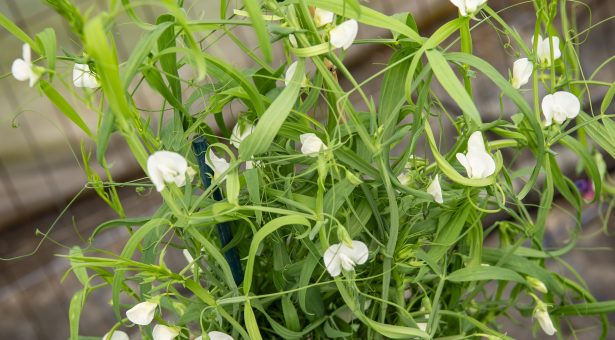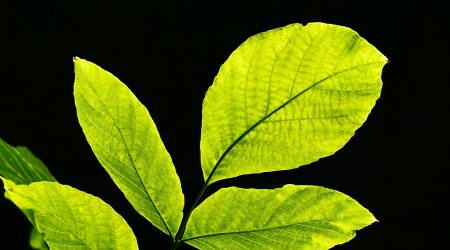How the plant with a toxic past can become a climate-smart crop of tomorrow

Genomic detective work has brought researchers closer to the secret of how and why grass pea produces its notorious toxin, paving the way for this ancient and climate resilient crop to become a food of the future.
Using a newly available genome sequence of grass pea (Lathyrus sativus L.) a research collaboration led by the John Innes Centre has identified key biochemical steps that lead to the production of the neurotoxin β-L-ODAP (ODAP).
Dr Anne Edwards of the John Innes Centre, one of the authors of the research, comments: “The genomic sequence for grass pea and the biochemical insights that occur as a result provide a breakthrough in our understanding. It offers an opportunity to develop varieties with less ODAP that are adapted to local conditions.”
The availability of the genome sequence means the researchers can use gene-editing and modern breeding methods to develop varieties of grass pea with low or zero ODAP content. This means that grass pea could be poised to make an important contribution to a more diversified and climate resilient food system in the future.
Glasshouse trials at the John Innes Centre and field trials run by the International Centre for Agricultural Research in the Dry Areas ICARDA in Lebanon and Morocco, and the Ethiopian Institute for Agricultural Research are already underway to test the performance of low ODAP grass pea lines crossed with local varieties.
The research which appeared recently in Nature Communications provides clues to the intriguing scientific question of how and why the grass pea produces its toxin.
What is Grass Pea?
Grass pea is a crop grown in many regions of the world that is high in protein and resilient to drought and flooding. It has been used for centuries as an insurance crop, that survives when other crops fail and is safe to eat as part of a balanced diet.
However, its widespread cultivation has been hampered due to a toxin contained within the pea, which can, in malnourished people, cause the disease neurolathyrism a condition which causes irreversible paralysis.
Grass pea is among a group of “orphan crops,” indigenous species that play a key role in local nutrition and livelihoods but that receive little attention from breeders and researchers.
Understanding how Grass Pea produces β-L-ODAP
Using the newly available genome assembly, the team have traced two enzymes which interact to catalyze the last steps of ODAP biosynthesis.
One of these enzymes is in many plant species involved in removing oxalate, a molecule which regulates photosynthesis, and is produced by fungi as part of an attack strategy.
In grass pea this enzyme pathway has been repurposed, leading to the production of ODAP, which provides an alternative route to removing oxalate.
One theory is that the toxin is produced as a kind of molecular sink to store the excess molecules used by the plant for defence or the products of essential processes such as photosynthesis.
The possible role that this pathway plays in defending the plant means that disrupting the process may have undesirable consequences for the plant, something that the research team must bear in mind when using approaches such as gene-editing.
“We know the enzymes that lead to ODAP but we don’t know the exact metabolic effects of disrupting the different enzymes in different ways,” explains author Dr Peter Emmrich from the Norwich Institute for Sustainable Development.
“The pathway leading to ODAP is important for the metabolism of other amino acids such as cysteine and methionine, essential to the plant’s health. It should be possible to have a plant that exists without ODAP; however, we do not know all the ways the pathway helps the plant to deal with its environment. So, the ideal outcome may be that you have a grass pea with less ODAP but more methionine.”
Previously, the high level of repeat sequences in the grass pea genome meant it was difficult to identify genetic sequences that code for the enzymes behind toxin production.
This new genome sequence means that the road map has become clearer, and we are closer to adding grass pea to the list of climate-smart crops of tomorrow.
“As we prepare for a future of increased climate change, we are going to need crops that can cope with drought, or flooding or inundations of salt water,” said Dr Edwards. “Grass pea can survive such conditions better than other pulses, so now with the genetic resources we have, there is an opportunity to develop low-ODAP varieties which have agronomic traits adapted to local conditions around the world.”
“But for low-ODAP varieties to benefit people, they have to be accessible to farmers, and seen as beneficial by them.”, Dr Emmrich added, “That is why we are now working with social sciences researchers at UEA (University of East Anglia) to understand farmer preferences and local seed systems, and reaching out to breeders around the world to help them make use of the resources we are developing.”
Genomics and biochemical analyses reveal a metabolon key to ß -L-ODAP biosynthesis appears in Nature Communications.
Grass pea – the orphan that is set to join the family fold of crops
One of the oldest known cultivated plants, grass pea is today grown as an insurance crop in Ethiopia, Eritrea, India, Bangladesh, and Nepal.
Its resilience to both drought and flooding makes it a promising crop for ensuring food security in a changing climate. Eaten as part of a balanced diet, it is safe.
However, until now its association with the disease neurolathyrism, a condition which causes irreversible paralysis, has limited the cultivation of the crop.
Caused by the toxin β-L-ODAP this condition only takes effect when grass pea is consumed to the exclusion of other food, such as times of famine and scarcity – often when other crops have failed.
There are no reliable models of safe human consumption for the disease because it is not ethically possible to test the effects.
The earliest description of the disease was made by the Greek physician Hippocrates, while the plant is immortalized in the Spanish artist Goya’s etching Gracias á la almorta (Thanks to the Grass Pea) which depicts a victim of neurolathyrism during Napoleon’s siege of Madrid.



